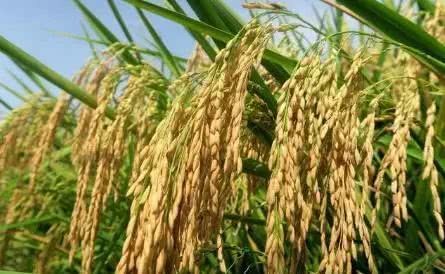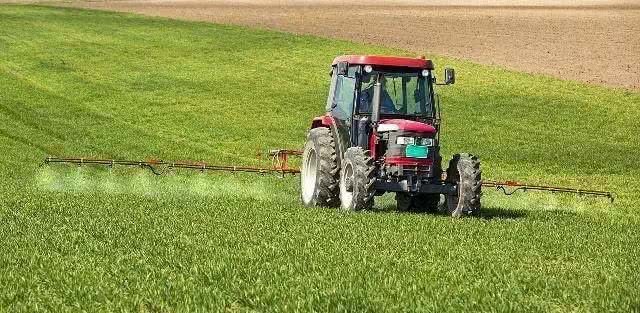Which rice varieties are suitable for direct seeding?

With the massive transfer of labor to cities and towns and the development of herbicides, direct seeding rice has developed rapidly in China because of labor saving, especially in the middle and lower reaches of the Yangtze River, where the area of direct seeding rice has reached more than half in some provinces. and it continues to develop with the development of agricultural machinery.
However, direct seeding rice still has many shortcomings compared with throwing and transplanting rice. In view of these shortcomings, what kind of direct seeding rice varieties we choose to plant in order to have a good harvest? In view of the shortcomings of direct seeding rice, we discuss the selection of suitable direct seeding rice varieties to avoid these shortcomings.
Replace high-definition large images
Disadvantages of direct seeding rice
The growth period of the first direct seeding rice is short. compared with the traditional transplanting rice, with the postponement of sowing time, the growth period of direct seeding rice is obviously shortened, for example, rice seedlings are raised around May 15 (transplanting rice). However, direct seeding rice can not be sowed until the end of May and early June. in this way, the growth period of direct seeding rice is about half a month shorter than that of transplanting rice, and with the postponement of sowing, the temperature in the later stage is on the low side. The heading stage is relatively later, which directly affects the grain filling and fruiting of rice.
There are many weeds in the second direct seeding rice.
There are three peak periods for direct seeding rice weeds, the first is sowing for 3 days, mainly barnyardgrass, festival vegetables, etc., and the second is about 4-leaf period of direct seeding rice, about 13 days of sowing, mainly paspalum grass, Qianjin, etc. The third period is sowing for about a month, mainly Hedyotis diffusa, etc., compared with transplanting rice, weeds occur more frequently and more, if there is no strong weed control technology. It's really a tricky business.
Replace high-definition large images
The third is that the harm of rice in late spring cold is more serious. In the early stage of direct seeding rice, low temperature freezing injury is easy to cause large area damage to rice, if continuous low temperature, it will cause yellowing, withering and even death of rice seedlings, so when we choose rice direct seeding species, tolerance to low temperature in the early stage is a very important choice.
What kind of rice direct seeding species can be selected to achieve the goal of high yield? Huai 9508 and super hybrid rice Zhuliangyou 819 can be selected.
Huai 9508, a late-maturing variety selected by Huaiyin Institute of Agricultural Sciences, has good performance in high yield, stable yield and high quality. in the field demonstration, the yield per mu is about 650kg, and the yield can reach more than 750kg in the year with suitable weather. It can be broadcast directly in early May, and this variety is a japonica rice variety.
Luliangyou 819, a two-line hybrid of indica rice, is suitable for planting in the middle and lower reaches of the Yangtze River. the growth period is about 107 days. It is highly resistant to rice blast and bacterial wilt. In 2006, the variety demonstration can reach more than 500 kg, and the high-quality and high-yield field can reach more than 576 kg.
Replace high-definition large images
The selection of rice direct seeding species should be combined with rice direct seeding technology in order to bring high yield. in rice direct seeding technology, attention should be paid to rice weeding and fertilization techniques. Direct seeding rice can be sprayed with chemical herbicides such as butachlor for chemical weeding during the growth period and weeding in shallow water.
Direct seeding fertilization of rice is about 20% higher than transplanting fertilization, re-applying base fertilizer in the early stage, paying attention to proper topdressing in the middle stage, and shelving seedlings in shallow water in the later stage, it is believed that a more ideal harvest can be obtained in the case of selecting better rice varieties and late management.
Rice direct seeding has some disadvantages, such as cold in early spring, short growth period, more weeds, more fertilizer and so on. If we choose appropriate rice varieties according to these shortcomings, combined with scientific cultivation technology, the advantages of rice direct seeding will be better reflected.
Here is science to promote agriculture, welcome to add attention, with you to grow knowledge.
- Prev

If you want to raise potted roses, you must pay attention to these things so that you can raise them well and bloom more.
Rose flowers want to grow well, planting is king, teach everyone a potted plant can also grow well, rose flowers want to grow well, planting is king, but not every flower friend has land, especially the balcony party flower friends in the city, inch soil inch...
- Next

Does Monsanto compensate glyphosate victims $289 million to show that GM is harmful?
Netizens recently said: "recently, a US court ruled that Monsanto paid 289 million US dollars to glyphosate victims and was responsible for cancer caused by its products." Glyphosate is one of the important partners of genetically modified organisms, which has been transferred to claim that it is better than food.
Related
- Wuhan Hospital Iron Tree Blooming Result Was Instantly Frightened by the Gardener Master
- Which variety of camellia is the most fragrant and best? Which one do you like best?
- What is the small blue coat, the breeding methods and matters needing attention of the succulent plant
- Dormancy time and maintenance management of succulent plants during dormancy
- Minas succulent how to raise, Minas succulent plant pictures
- What are the varieties of winter succulent plants
- How to raise succulent plants in twelve rolls? let's take a look at some experience of breeding twelve rolls.
- Attention should be paid to water control for succulent plants during dormant period (winter and summer)
- Watering experience of twelve rolls of succulent plants
- Techniques for fertilizing succulent plants. An article will let you know how to fertilize succulent plants.

